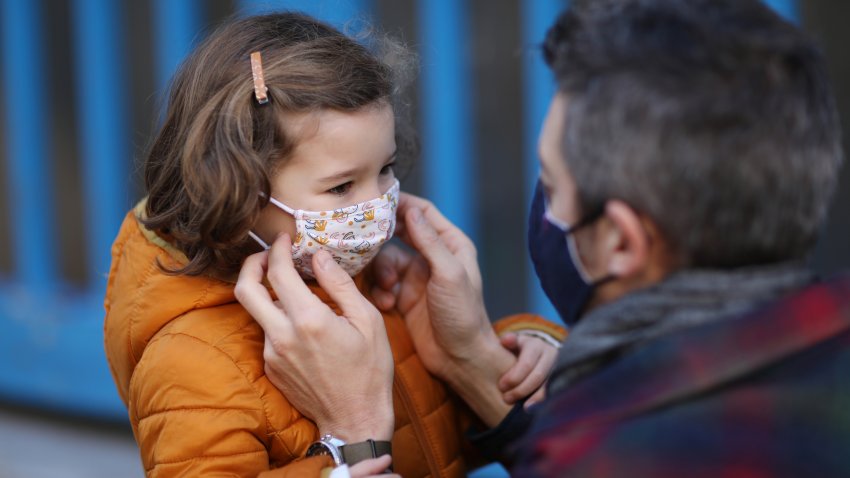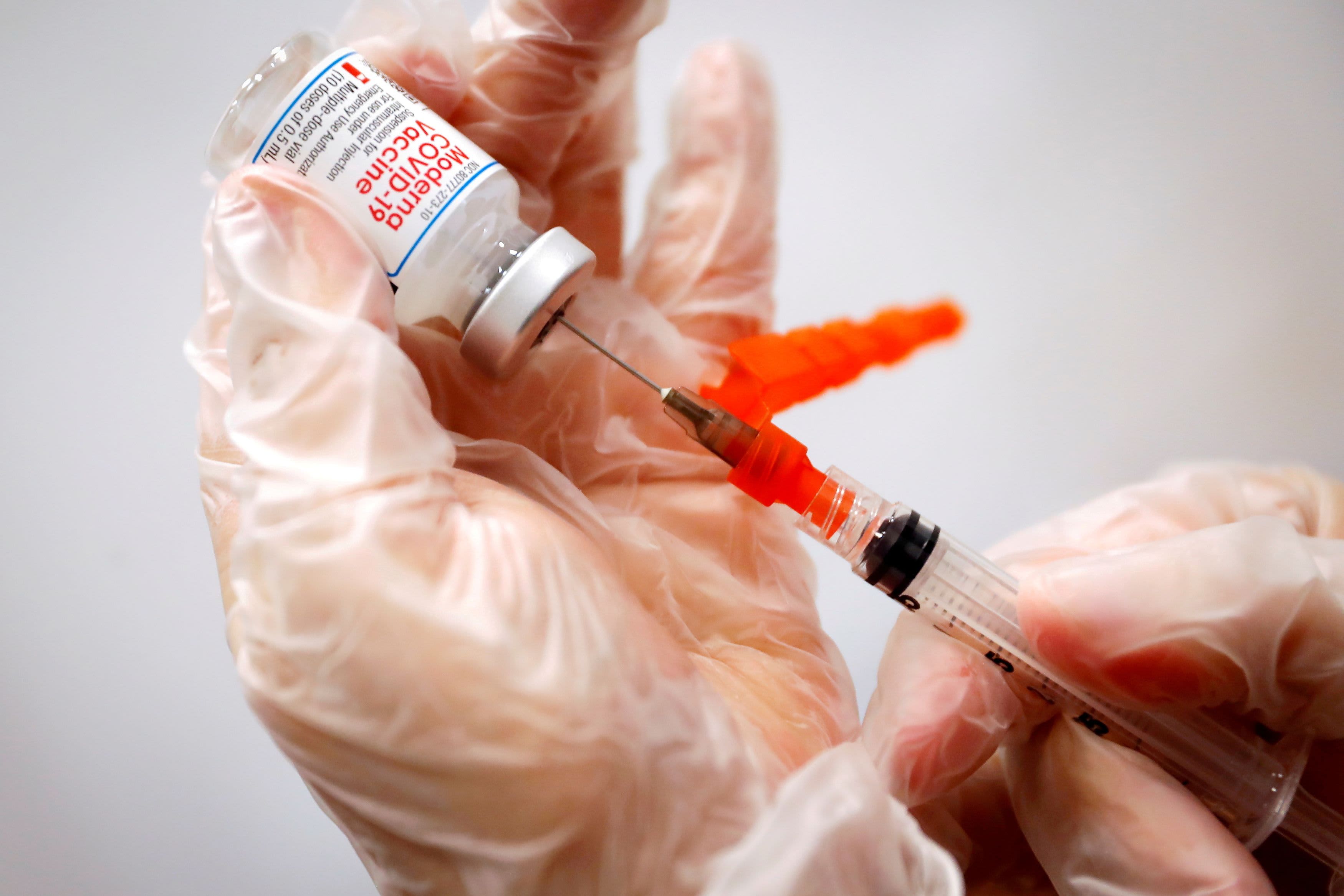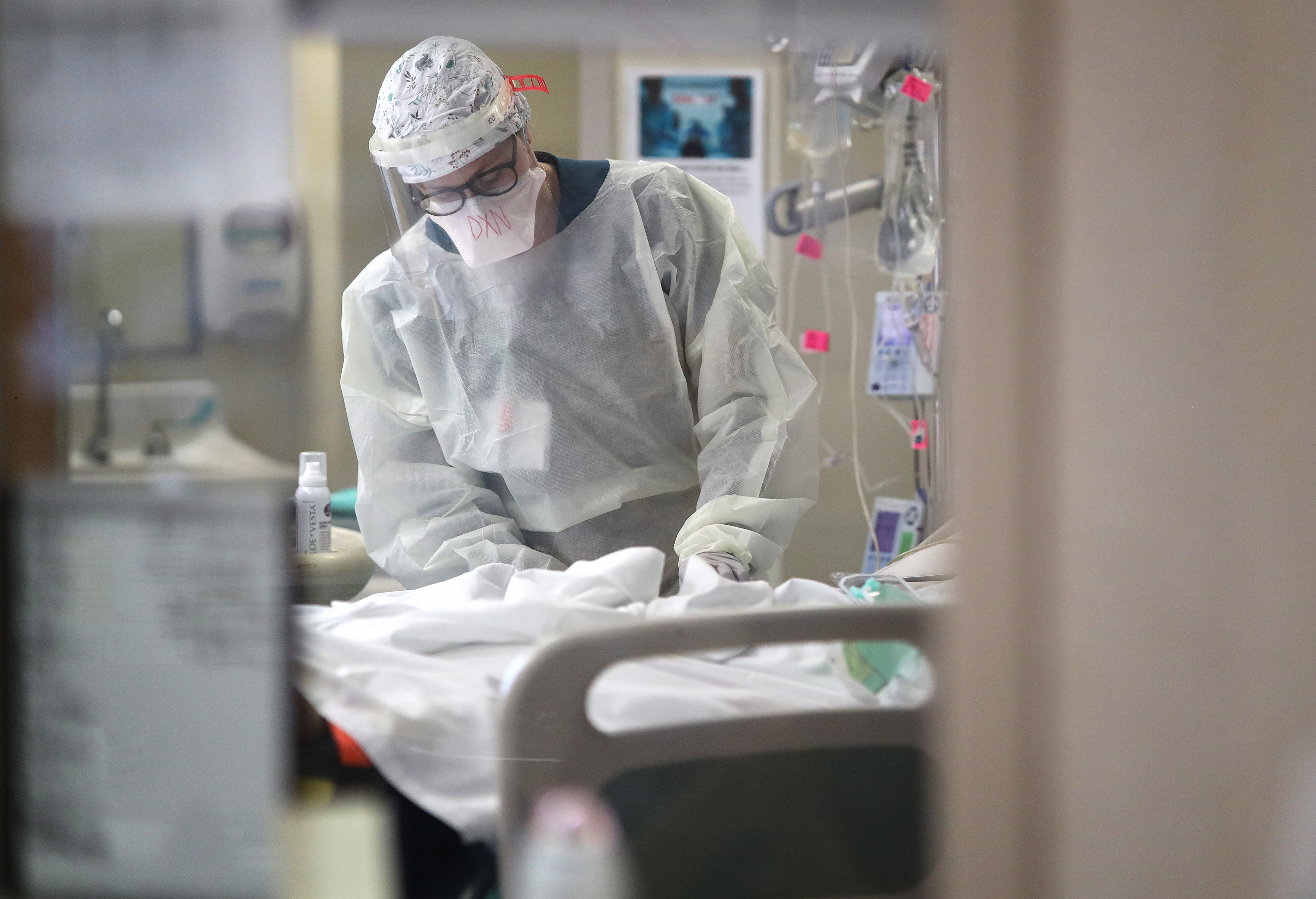With the Centers for Disease Control and Prevention considering a recommendation that Americans wear more protective masks amid a surge in COVID cases caused by the omicron variant, medical professionals are offering their advice on which facial coverings are best. NBC 5’s Alex Maragos has more.
As the omicron variant continues to cause a massive surge in COVID-19 cases across the country, the Centers for Disease Control and Prevention is considering updating its guidance on mask wearing, indicating that it will recommend that Americans wear more-protective facial coverings.
While federal officials say that any facial covering is better than not having one, there is growing concern that single-layer cloth coverings may not provide sufficient protection against the omicron variant, leading regulators to consider new guidelines that will encourage Americans to wear more protective masks, such as N95 or KN95 coverings.
A big issue with such a recommendation, however, is the proliferation of counterfeit facial coverings that has occurred during the COVID-19 pandemic. According to the CDC, more than 60% of the KN95 masks that are on the market in the United States are counterfeit, and Americans have reported similar issues with the more-protective N95 masks, which are regulated and approved by the National Institute for Occupational Safety and Health (NIOSH).
So just how are Americans supposed to protect themselves from counterfeit face coverings? According to the CDC, the tips vary by the type of facial covering that a person is seeking out.
Here are some tips from the CDC when trying to determine whether an N95 filtering facepiece respirator (FFR’s) is legitimate:
-NISOH approved coverings will always have these designations: N95, N99, N100, R95, R99, R100, P95, P99, or P100.
-No markings at all on the filtering facepiece respirator (FFR)
-NIOSH markings must be clearly visible either on the covering itself, or within the packaging
-NIOSH-approved coverings must have an approval number on the mask or the headband
-NIOSH must be spelled correctly
Feeling out of the loop? We'll catch you up on the Chicago news you need to know. Sign up for the weekly Chicago Catch-Up newsletter.
-Decorative fabric or add-ons are not featured on approved-coverings
-NIOSH does not approve respirators for children, so if packaging includes that claim, it is likely fake
-NIOSH-approved FFR’s have headbands, not ear-loops.
The NIOSH and the CDC have produced a database where individuals can verify whether their N95 masks are approved by federal regulators.
For additional tips on how to spot a counterfeit N95 mask, you can visit the CDC's website.
The BIGGEST Tip to Avoiding Counterfeit KN95 Masks
There is one specific thing for individuals to keep in mind if they are shopping for a KN95 mask. If that mask bears the “NIOSH” marking, then it is not legitimate, because the institute does not approve KN95 masks, or any other masks that are designed to adhere to international standards.
KN95 masks are manufactured in China, and adhere to Chinese governmental standards, according to the CDC.

Here are some other tips from the CDC when looking at KN95 masks, or any other facial coverings:
-If a listing claims to be “legitimate,” it likely isn’t.
-Look at transactions and reviews, if possible.
-Is the primary contact email address connected to the company’s website, or is it a free email account? If it’s a free email account, it’s likely the seller isn’t part of a reputable company.
-Look for bad grammar or typos in the listing.
Additional tips can be found on the CDC's website.



